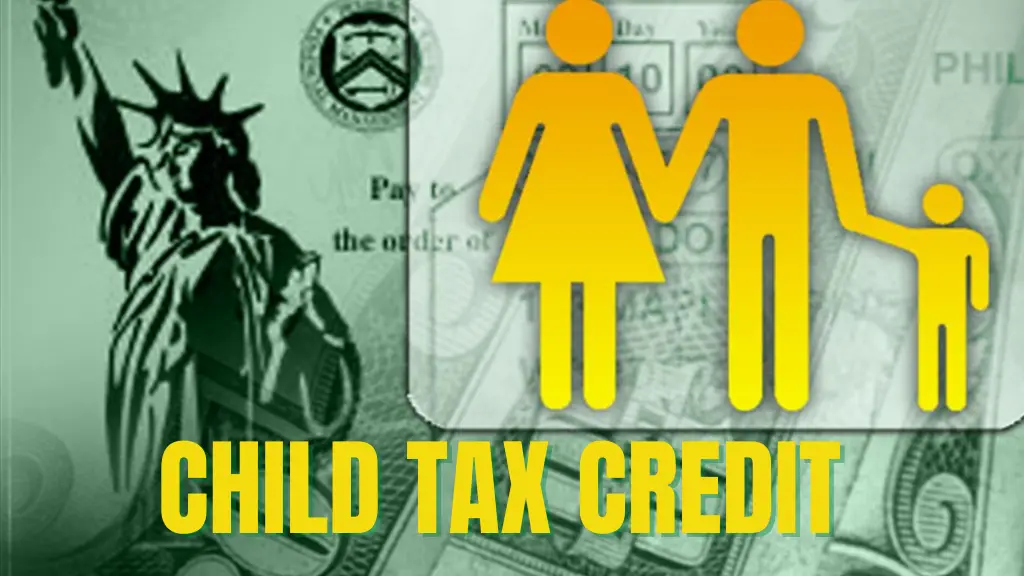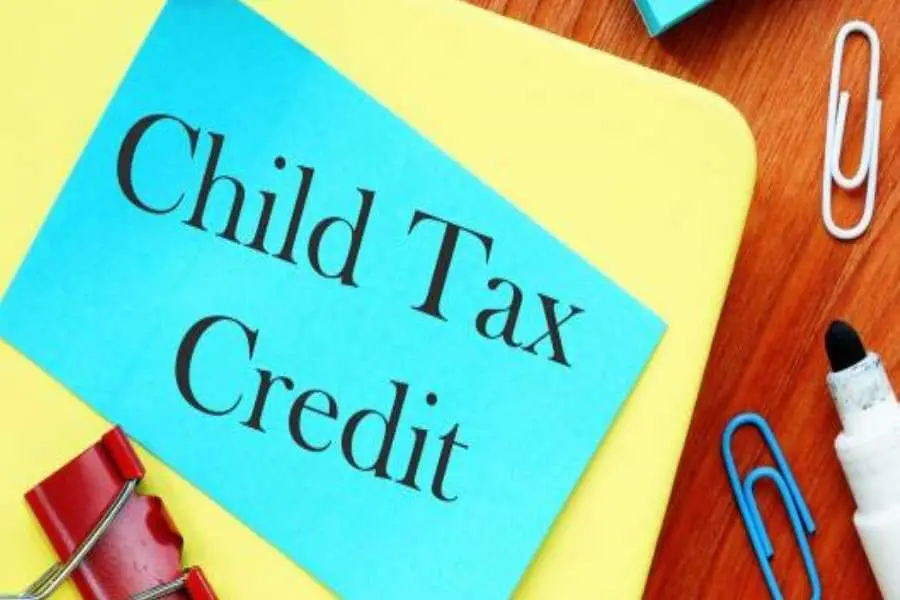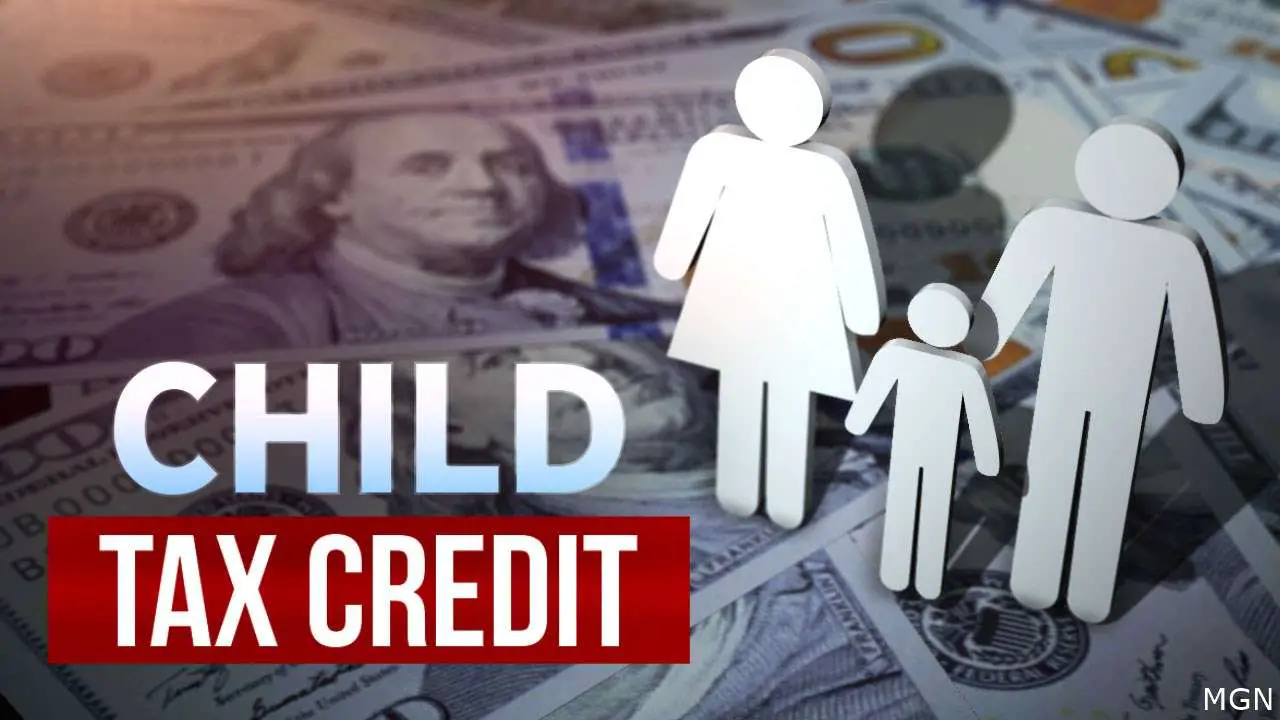When We Recalculate Your Benefit
We will recalculate your benefit when one of the following situations applies and, if applicable, send you a CCB notice:
- at the beginning of every payment period based on the tax returns that you and your spouse or common-law partner filed for the previous year
- after any reassessment of either your or your spouses or common-law partners tax return that affects the amount of your benefit
- after a change in your marital status
- after a change in the number of eligible children in your care
- after you tell us about changes to your situation that could affect your benefit. For more information, see When you should contact us
A Childs Age Determines The Amount
A childs age helps determine the amount of Child Tax Credit that eligible parents or guardians can receive. For 2021, eligible parents or guardians can receive up to $3,600 for each child who was under 6 years old at the end of 2021, and up to $3,000 for each child who was between the ages of 6 and 17.
Rules For Child Dependents
Your child must have been no older than age 16 as of Dec. 31, 2020, before the ARP rules came into effect, and this age rule comes back in 2022. The age cap was 17 in 2021. Your child must not have reached age 18 before Jan. 1, 2022.
They must be your biological child, adopted child, stepchild, foster child, sibling, or descendants of any of these individuals. They must live with you for more than half the year, and they can’t provide more than half their own support.
Eligible children must additionally have a Social Security number.
A few exceptions to the qualifying rules for eligible children do exist. You can find them in IRS Schedule 8812, or consult with a tax professional if your child narrowly misses qualifying under these rules.
You May Like: What Are The Proposed Changes To Capital Gains Tax
What Should Parents Do If They Alternate Yearly Custody Of A Dependent
Even if parents have an arrangement to alternate custody of their dependent, the IRS won’t know who has primary custody until your 2021 tax return is filed next spring. Let’s say, for example, that you and a coparent switch between claiming a child in odd-numbered and even-numbered years. If you start receiving the advance child tax credit payments this year even though you won’t actually be claiming the child on your 2021 return, then you are technically not entitled to that money.
If this kind of arrangement applies to you, or if you haven’t yet determined which parent will be claiming the dependent for 2021, the best option is to unenroll from the monthly payment program.
Child And Dependent Care Tax Credit

Unlike the child tax credit , you can use the child and dependent care credit only if you spend money for child care so that you and your spouse, if any, can work. There is no income ceiling on the child and dependent care credit . People with higher incomes get a smaller credit than those with more modest incomes. Here’s how it works.
You qualify for the credit if:
- you have a qualifying child or other dependent under the age of 13, or your spouse is disabled and physically or mentally incapable of caring for him or herself, or you have any disabled dependent who has income of less than $4,000 per year
- you incur child care expenses to enable you and your spouse, if any, to earn income
- you and your spouse file a joint tax return , and
- you and your spouse, if any, both work either full or part-time and have earned income for the year, unless you or your spouse is a full-time student or disabled.
The amount of the credit is based on a percentage of the child care expenses you incur on the days that you and/or your spouse work. Under the regular rules, the credit is equal to 35% of childcare expenses up to $3,000 for one child, or $6,000 for two or more. But the credit is reduced by 1% for every $2,000 in household income over $15,000, until reaching 20%. Thus, the credit is 20% of childcare expenses if your household income is $45,000 or more.
- babysitting
Read Also: How To File Pa State Tax Return
How Much Could A Family Get
Families with children under 6 years old can receive up to $3,600 per child and those with children between 6 and 17 can receive $3,600 per child. For example, a single parent of a toddler who makes $10,000 a year would have previously received $1,125. Under the new law, they would get $3,600, according to estimates from the Center on Budget and Policy Priorities. A single parent with a 4 and 7 year old would receive $6,600.
New Brunswick Child Tax Benefit
This benefit is a non-taxable amount paid monthly to qualifying families with children under 18 years of age. The New Brunswick working income supplement is an additional benefit paid to qualifying families with earned income who have children under 18 years of age. Benefits are combined with the CCB into a single monthly payment.
You may be entitled to a basic benefit of $20.83 per month for each child. The amount of the basic benefit is reduced if your adjusted family net income is more than $20,000.
The NBWIS is an additional benefit of up to $20.83 per month for each family. It is phased in once family earned income is more than $3,750. The maximum benefit is reached when family earned income is $10,000. If your adjusted family net income is between $20,921 and $25,921, you may get part of the supplement.
Your New Brunswick child tax benefit payment may include a New Brunswick school supplement amount. The NBSS is paid once a year in July to help low income families with the cost of back to school supplies for their children. If your adjusted family net income is $20,000 or less, you will get $100 for each of your children born between January 1, 2005, and December 31, 2017.
These amounts will be combined with the CCB into a single monthly payment.
This program is fully funded by the Province of New Brunswick.
Also Check: How To Find Property Tax
Why You Should Consider Filing A 2021 Tax Return
If you havent filed a tax return before, or dont file every year and are eligible for the Child and Dependent Care Credit, be sure to file to receive the credit this year.
You can file a 2021 tax return and potentially receive thousands of additional dollars in tax credits when you file. These additional credits include:
Free resources to help you fileIf you are new to tax filing, or even if youve filed before but would like some help this year, there are places located across the country that can support you as you file your tax return. Many of these organizations offer both in-person and virtual support.
Additionally, many individuals file their tax returns with an accountant or tax preparer for a fee and you can search for an to find support near you. The above are all no-cost solutions.
What If I Don’t File A Federal Income Tax Return
Because the IRS relies on tax returns to determine the enhanced CTC, some people may fall through the cracks, such as low-income households that aren’t required to file tax returns. In that case, the IRS has opened a portal for those families to register for the tax credit
The IRS says that non-filers will need to provide personal information such as their date of birth, as well as Social Security numbers for themselves and their children. If they have a bank account, they can also enter the bank routing number and bank account number to receive deposits.
Don’t Miss: How Do Small Businesses Pay Taxes
If You Have Children You Support There Are Two Different Tax Credits You Should Know About
Children are expensive. To offset some of this expense, Congress provides two special tax credits to people who have children:
- a child tax credit, and
- a child and dependent care tax credit.
If you qualify, you can get both credits in the same year. In the past, the child tax credit was limited to middle and lower-income taxpayers. No longer: you can earn up to $400,000 and qualify for the full credit.
If The Parents Are Undocumented Immigrants How Can They Receive The Child Tax Credit Advance
If a family has at least one qualifying child who is under age 18 at the end of 2021 and who has a valid Social Security number they may receive the advance Child Tax Credit, regardless of the immigration documentation status of the parents.
For more information about how to qualify for the credit and prepayments, how to register to receive prepayment, or how to opt-out of receiving prepayments, you can visit the IRS website at or the GetCTC website at or .
Read Also: How Do I Dispute My Property Taxes
Child Tax Credit 2021 And Beyond
Under the American Rescue Plan, the IRS will disburse half of the credit in advance as monthly payments rather than lumping the full credit amount into taxpayers refunds during tax season. Before 2021, the credit was only available to individuals who reported AGI over $2,500, which caused some of the lowest income families to receive no credit. The Child Tax Credit today reaches even those who have no income and arent required to file tax returns at all.
It should be noted that if you didnt qualify for the credit in 2020, you could be eligible now, and you should update your information in the Child Tax Credit Portal.
How To Get Your Child Tax Credit

You may not have had to do anything at all to receive advance payments of the CTC in 2021. The IRS sent them out automatically to taxpayers who were eligible based on their 2019 or 2020 tax returns. But you’re not out of luck if you didn’t file a return in those years or if your circumstances have changed since then, such as if you had a child born or adopted in 2021.
Recommended Reading: What Refinance Costs Are Tax Deductible
Why You Got A Letter
You may have received a notice from us if:
- We require additional documentation to process your claim
- You didnt qualify
- We adjusted your claim
Follow the instructions on your notice or contact your tax preparer.
For tax year 2021: FTB has released the EITC Qualification Married/Registered Domestic Partner Filing Separate public service bulletin to address changes in the CalEITC qualifying criteria as well as outline a process for taxpayers that have already filed their 2021 return and will now claim CalEITC/YCTC.
Child Tax Credit 202: How Much Is It And When Will I Get It
- 8:52 ET, Jul 22 2022
- Invalid Date,
TIME is running out for thousands of families to apply for new child tax credit payments.
This credit is part of Connecticut’s 2022-2023 budget bill, which was signed into law by Governor Ned Lamont in May.
Those eligible for the credit will receive a rebate of $250 per child, which is capped at three children for a total of $750.
To get the maximum amount for each child, eligible recipients must meet the following income thresholds:
- Single or married filing separately must make $100,000 or less
- Head of household must make $160,000 or less
Eligible families can apply on the Department of Revenue Service portal by clicking on 2022 CT Child Tax Rebate.”
Applications must be submitted by Sunday, July 31.
Recommended Reading: Where To Send My 1040 Tax Return
How Much Is The Child Tax Credit Worth
Due to the American Rescue Plan Act , the Child Tax Credit will bump up in 2021 to $3,000 for children between 6 and 17 and $3,600 for children under 6. Plus, instead of only providing that amount once a year when filing, the IRS has distributed half the tax credit in advance in increments of $250 or $300 per month . Taxpayers who didnt get the early payments can claim the whole credit when they file in 2022.
The $2,500 earned income requirement has been removed, so unemployed parents can still qualify for the credit. The credit begins phasing out at a rate of $50 for every $1,000 over $75,000 for single filers, $112,500 for heads of household and $150,000 for married couples filing jointly.
In addition to the requirements for a qualifying child, the child must meet these requirements to qualify for the full Child Tax Credit:
- You must claim the child as a dependent on your return.
- The child cant have provided over half of their own support for the year.
- The child must have a Social Security Number.
The Child Tax Credit Is A Tax Benefit To Help Families Who Are Raising Children That Was Expanded In March 2021
The American Rescue Plan signed into law by President Biden expanded the Child Tax Credit for 2021 to get more help to more families. The American Rescue Plan:
- Increased the credit from up to $2,000 per qualifying child in 2020 to up to $3,600 for each qualifying child under age 6.
- Increased the credit from up to $2,000 per qualifying child in 2020 to up to $3,000 for each qualifying child ages 6 to 16.
- Makes 17-year-olds eligible for up to $3,000 in credit.
- To get money to families sooner, the IRS began sending the first-ever monthly payments this year, starting in July.
- Advance payments went to the families of over 61 million children from July to December 2021.
Recommended Reading: When Is Tax Day 2021 In Texas
When Will I Start Receiving My Monthly Payments
People who receive payments by direct deposit got their first payment on July 15, 2021. After that, payments continue to go out on the 15th of every month. If you havent provided the IRS with your bank account information on a recent tax return, a check will be sent out to you around the same time to the address the IRS has for you.
How Will The Child Tax Credit Give Me More Help This Year
The American Rescue Plan, signed into law on March 11, 2021, expanded the Child Tax Credit for 2021 to get more help to more families.
- It has gone from $2,000 per child in 2020 to $3,600 for each child under age 6.
- For each child ages 6 to 16, its increased from $2,000 to $3,000.
- It also now makes 17-year-olds eligible for the $3,000 credit.
- Previously, low-income families did not get the same amount or any of the Child Tax Credit. Under the American Rescue Plan, all families in need will get the full amount.
- To get money to families sooner, the IRS began sending monthly payments this year, starting in July.
- It is broken up into monthly payments, which means payments of up to $300 per child under age 6 and $250 per child ages 6 to 17.
- Youll get the remainder of the credit when you file your taxes next year.
Also Check: How Many Years Of Taxes To Keep
Theres Still Time To Get The Child Tax Credit
If you havent yet filed your tax return, you still have time to file to get your full Child Tax Credit.
Visit ChildTaxCredit.gov for details.
Under the American Rescue Plan of 2021, advance payments of up to half the 2021 Child Tax Credit were sent to eligible taxpayers.
The Child Tax Credit Update Portal is no longer available, but you can see your advance payments total in your online account.
Most Families Can Get Thousands Of Dollars From The Child Tax Credit

Your children probably qualify if they lived with you for most of 2021, they were under 18 at the end of 2021, and they were not born in 2022. GetCTC will walk you through a few quick questions to make sure.
The Child Tax Credit for tax year 2021 is up to $3,600 per child under 6, and $3,000 per child age 6-17.
If you received any monthly Advance Child Tax Credit payments in 2021, you need to file taxes this year to get the second half of your money. The rest of your Child Tax Credit will be issued in one payment.
If you have not received any Child Tax Credit payments yet, you can file simplified taxes now to get the whole credit.
You May Like: How To File Taxes Online
Who Counts As A Qualifying Child For 2021
To qualify for the monthly payments, not only taxpayers but also their dependents must meet certain conditions. For example, the law requires that your child be a U.S. citizen, national or resident alien who will not turn 18 before Jan. 1, 2022.
Each qualifying child must also
- Have a valid Social Security number
- Be related to you
- Live with you for more than half of the tax year
Also key:
- You must provide your child at least half of their support, which includes food and clothing as well as household, education and medical expenses.
- You must claim the child as a dependent on your tax return.
- The child cant file a joint return for 2021 with his/her spouse if married .
Qualifying dependents could include eligible sons, daughters, stepchildren, foster children, brothers, sisters, stepbrothers, stepsisters, half-brothers, half-sisters or descendants of any of them. This could include, for example, eligible grandchildren, nieces or nephews. For more detail on this, see IRS Publication 501 on dependents.
